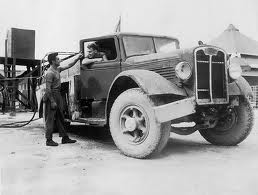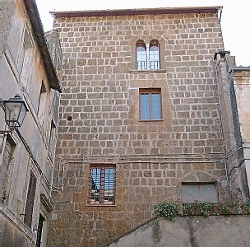What is a Negawatt?
Amory Lovin's concept of the negawatt is crucial to any comprehensive analysis of how a potential alternative energy system compares with existing systems. Even when limiting the comparisons to questions of monetary cost, the B2M Project is an expression of the belief that the route to the most cost-effective and environmentally sound way of producing energy lies in not needing to produce it at all. For example, there are plenty of studies which compare the energy efficiency of public versus private transportation. The potential savings, while real enough, are paltry compared to the benefits ‒ be they financial, social, medical, environmental and so on ‒ of living in a "walkable" city in which the constant "need" for transportation has been eliminated. First-world societies have been fairly compared to children who have inherited access to large trust funds, and who then proceed to run through that inheritance by living an extravagent lifestyle. As that inheritance runs out, first-world societies will necessarily have to learn how to get by on less. That will not be an easy transition, and B2M technology does not have the potential to enable people to continue in the style of consumption that they've grown used to. What B2M can do is to enable people to reshape their lives in a way that reconnects them with their landbase and with each other. B2M will not power life as usual in first-world societies, but it can go a long way towards enabling rural people to locally provide what they truly need. The changes that "generate" negawatts have a crucial role to play in crafting a new way of living abundantly, and create the context with is necessary in order for B2M to work. Those changes fall into three catagories: Greater Efficiency
Switching from electric hot water to natural gas, or from natural gas to solar hot water heating are also excellent ways to decrease the amount of energy one needs to purchase. Refitting an older house with well-designed windows or purchasing efficiently designed appliances are ways that most anyone can become less dependent on purchased energy. While such changes are not part of B2M per se, they are necessary preconditions for B2M to tip the blance between being a consumer to becoming an energy producer.
Installing water efficient appliances would improve your situation. Cutting your water usage to forty gallons a day would help lower your costs since you'd have to pay to bring in water half as often. But there's a limit to how much one can comfortably cut their water consumption. That would be a good improvement. But let's say that you live in a place that has a rain shower most every day, and that you invest in a rain catchment system yields an average of fifty gallons a day. Having already lowered your water usage to forty gallons a day, you're now in a much better situation since your water supply would be increasing each day and you wouldn't have to pay, again and again, to have water trucked in. It's important to remember that the rain catchment system would only solve your need for water so long as your consumption remained low. All too often conservation efforts become victims of Jevon's Paradox, and with increases in efficiency leading to increased consumption. Once your cistern was full, you could even look at trading some of your surplus water to your neighbor at a rate which would be cheaper than what your neighbor would have to pay to have water trucked in ‒ a good deal for everyone except for the water company. In our metaphor, water symbolizes energy, and the rain catchment system represents the B2M system's ability to combine sunshine, rain, and atmospheric carbon dioxide into different forms of energy ranging from the vehicular fuel needed to get products to market to the hot water needed to run a community laundry. Greater Durability
Most of the resources people rely on today, from homes to automobiles, from kitchen appliances to computers, are not designed to be owner/user repaired. More than half of the world's population is too young to remember when worn shoes were resoled, when wind-blown umbrellas were recovered and slow-running clocks were cleaned and resprung. As the Age of Abundance gives way to the Age of Scarcity, the embedded value of a wide range of products will increase as cheap energy sources are exhausted. Unfortunately, the obsolescence of much of the modern world is locked in when built. It won't be long before "throw away" conveniences will be too expensive to use, and the first quality people will look for in a product will be its durability. A home, however modest, that can only serve one generation will come to be seen as too expensive to build when compared to a home that may cost twice as much to build but which can serve a dozen generations. As energy costs rise relative to labor and land, the embedded costs of use-once-and-discard will come to be seen as too high. Since much of what people are using today is not designed to last, it won't. The question that will then have to be addressed is how to sustainably generate the capital needed to build a life support systems that will last. If used wisely, B2M has the potential to generate some of the capital needed to operate durable communities in rural locations. But if used unwisely, B2M can turn a forest into a desert. This is powerful technology that do good or harm in much the same way that the fire that warms one's home can, if used unwisely, burn it to the ground. Outright Elimination
It's pretty simple really. The transportation of trade goods consumes energy; the local consumption of locally produced goods doesn't. Starting a process of radical change can be that simple. By eliminating outright both the energy costs of transportation and the embedded energy costs of the machinery needed to transport those goods, people can start investing in a better way of life. And what's perhaps even more important is that local production and use frees up the hours consumed in commuting and long distance transportation of consumable goods. Too many people know first-hand that time spent commuting is highly detrimental to their sense of well-being. Anything that can help eliminate such a massive drain on individual and community resources offers an important step towards a more satisfying way of life. It's a sort of "two-for-one" deal; with every negawatt gain, less money is spent. And needing less money allows us to spend more time on the things in life that are priceless. |



